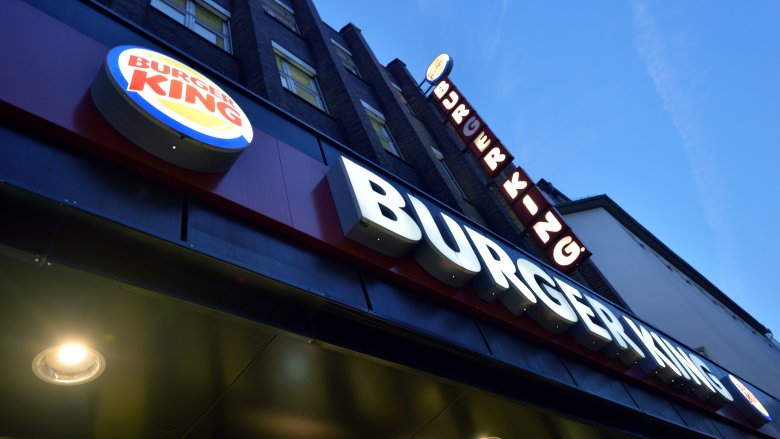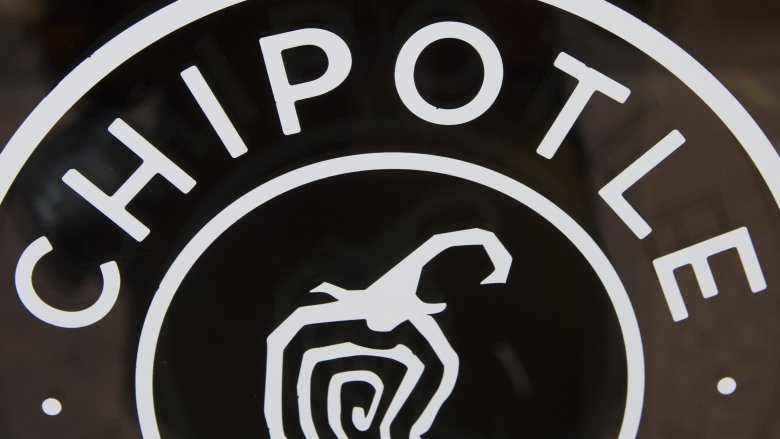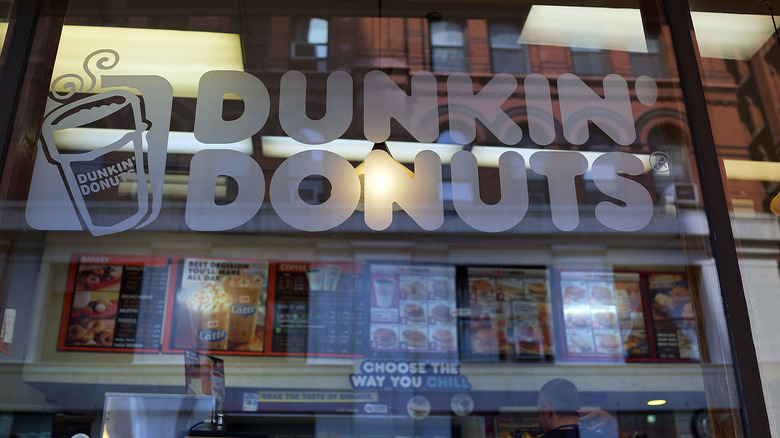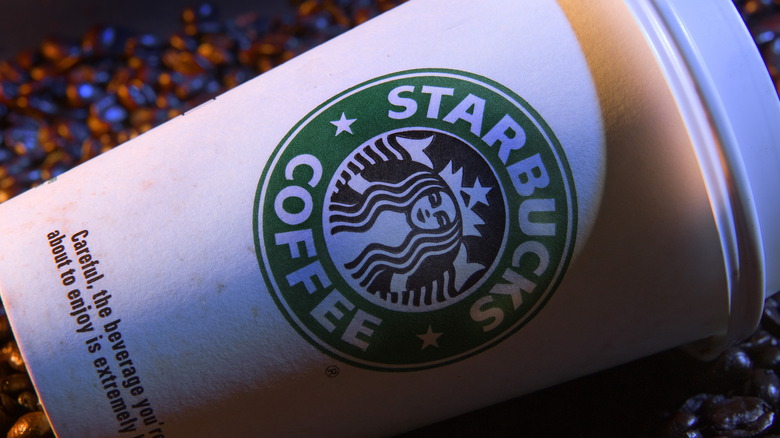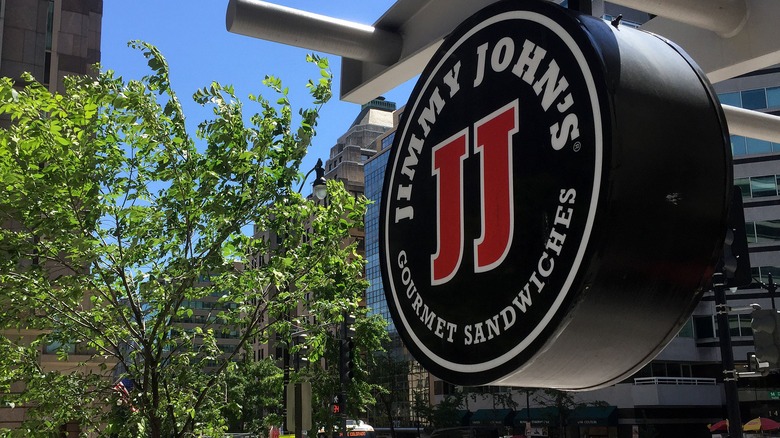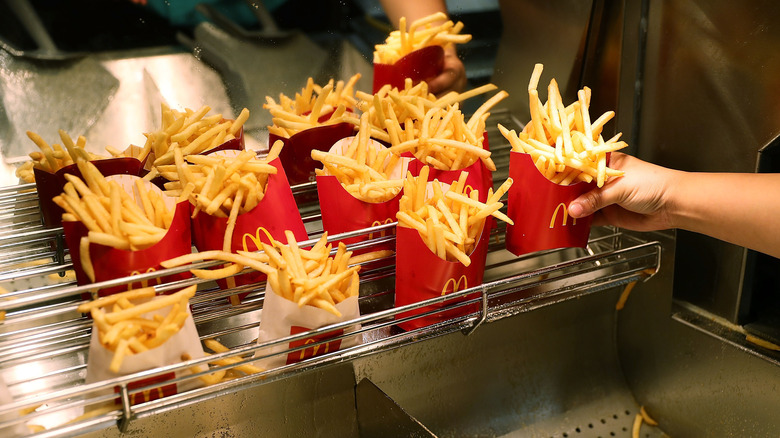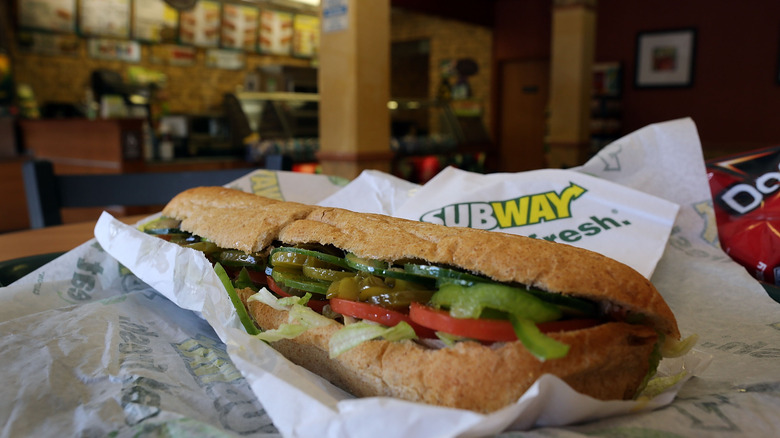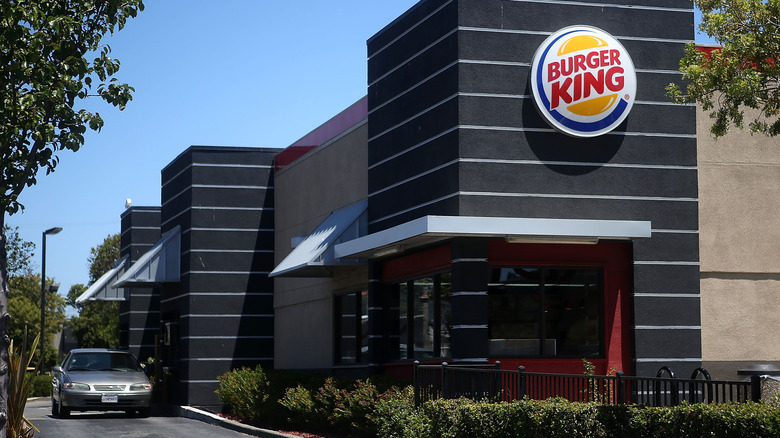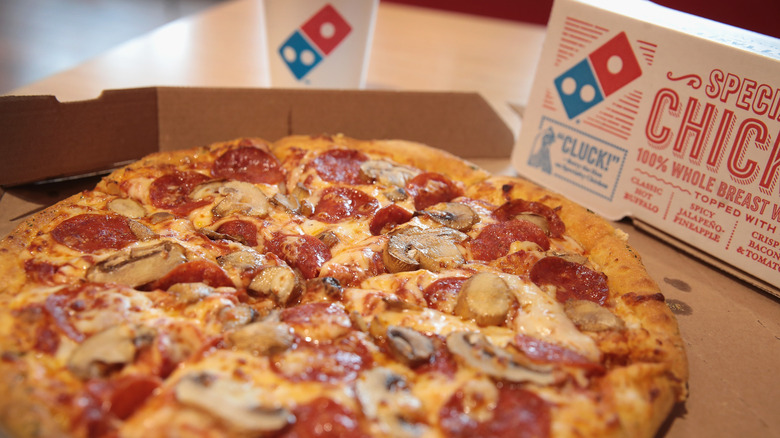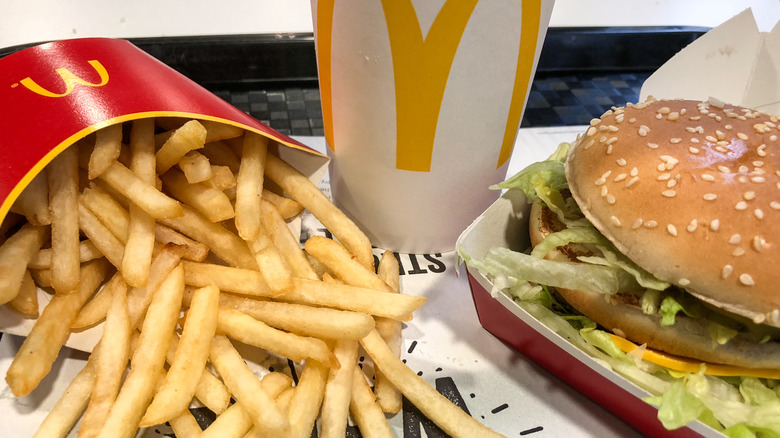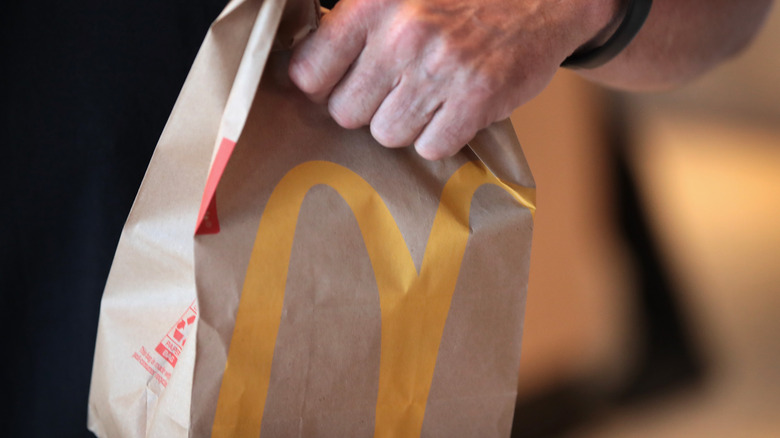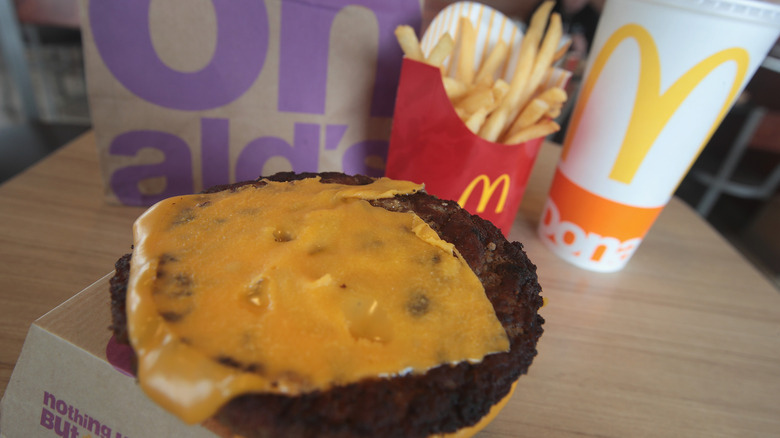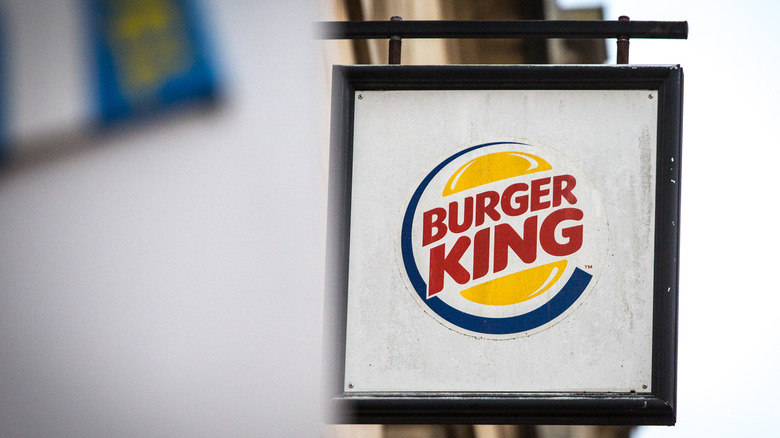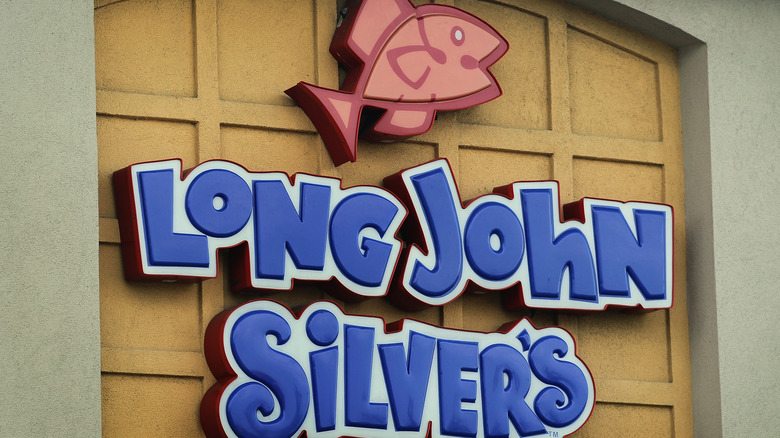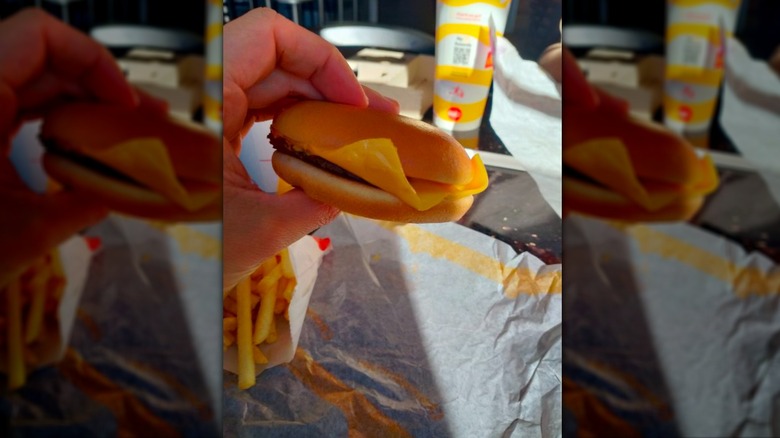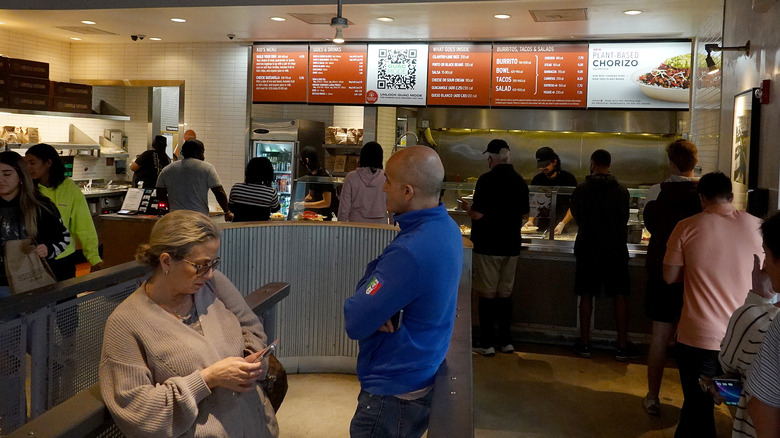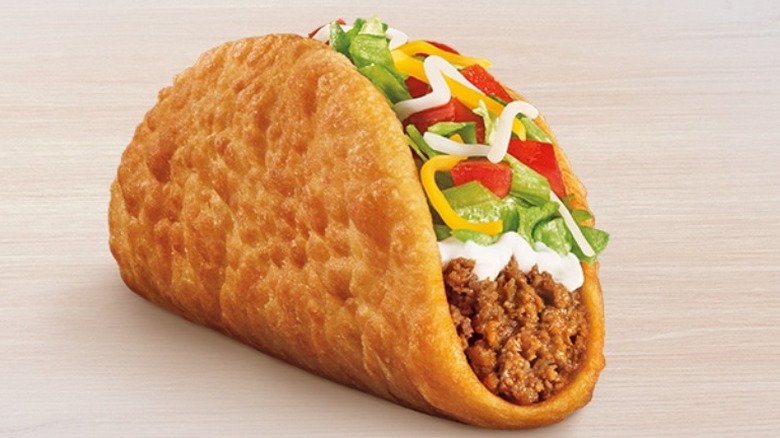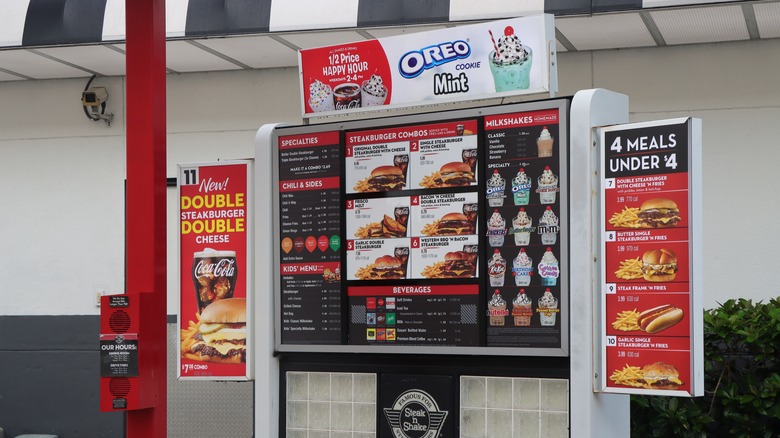Times That Fast Food Restaurants Cheated Customers
There are only a few things you really expect when you visit any one of the fast food restaurants across the world. You want a fast, filling meal at a decent price, and ... that's about it. You're not looking for something super-healthy, and you're not even looking for choices your mother would necessarily approve of. That's not asking much, right? It turns out, you should also ask for fair service and treatment from the establishment you're visiting because, according to customers, there have been a lot of times when that didn't happen.
We apologize in advance for ruining your trust in your favorite junk food mecca, but it had to happen eventually. These are the times that fast food restaurants cheated customers.
Burger King's Croissan'wich price hike
Burger King ended 2017 by settling a class action lawsuit claiming Maryland customers had been cheated for almost two years. According to Fox News, the lawsuit was filed by Koleta Anderson of Maryland, and she claimed customers who used a Buy One, Get One coupon for BK's Croissan'wich were paying an inflated price. Anderson says when she used the coupon, she was charged for a single sandwich at $3.19. Without the coupon, she was charged $2.16 for the same sandwich.
Anderson says she tried it at a few different Burger King locations, and her lawyer's investigator did, too. They said they got the same result and claimed BK was hiking the price for coupon-using customers. BK denied there was any funny business going on, but it still settled the matter and agreed to hand out some $2 and $5 gift cards.
Chipotle's questionable calorie interpretation
Chipotle's claim to fame is fresh ingredients and the fact that it's a healthier alternative than some competitors, but their eagerness to share just how healthy they are didn't sit well with diners from Los Angeles. According to the Los Angeles Times, Chipotle was the target of a class action lawsuit when diners finished their meal and felt much fuller than the advertised 300-calorie burrito should have made them.
The confusion came in when diners looked at a menu board that showed a picture of the chorizo burrito, a summary of ingredients, and a note that claimed simply, "300 calories." Fortune says Chipotle's nutrition calculator gives you a grand total of 930 calories for just a chorizo burrito with white rice and black beans (much less than the advertised burrito was filled with). Turns out, the chorizo alone was what the 300 calories referred to on the signage. While it might seem obvious that all those ingredients will add up to more than 300 calories, everyone from customers to registered dietitians chimed in to say the advertising was incredibly deceiving — and therein lies the problem. Since California law requires restaurants to make complete nutritional information available to customers, it was a double whammy. These days Chipotle's nutritional information is much clearer.
Dunkin' Donuts look-alike ingredients
It was a rough 2017 for Dunkin' Donuts. The company made headlines a few times when it was accused of using ingredients that weren't exactly as advertised, and it started that April. That's when The Boston Globe says a Massachusetts customer got a settlement out of a lawsuit filed against the coffee and donut chain claiming customers at a group of 20 locations were being served margarine or butter substitute, even if they asked for butter. The suit had been in the works for a few years after it came to light franchisees almost always used butter substitute, saying it was easier to spread. It's also worth noting that the 10 plaintiffs were awarded $500 each, while the attorneys took home a whopping $500,000.
In June, Boston.com reported on another lawsuit filed in New York. This time, the company was being accused of using ground beef in its steak-and-egg sandwiches. The ingredients list officially says "Angus beef," which the plaintiffs say isn't actually the "steak" advertisements describe. And in August, yet another class action lawsuit was filed. Today Food says this one claimed products labeled as "blueberry" didn't contain any actual blueberries and instead used sugary "flavored crystals." To be fair, that's not exactly an unheard of practice, but this customer says he wouldn't have paid as much knowing the fruit was artificial.
Starbucks' questionable lattes
Next time you get a latte from Starbucks, pop the top. What do you see? According to a 2016 lawsuit (via The Guardian), you might see 25% less coffee than you expect.
Plaintiffs claimed that Starbucks lattes were carefully constructed to save the company money and short-change the customer. It even went as far as alleging that the pitchers Starbucks employees were instructed to use to make their coffees weren't the proper measurements, and when the case made it to court, it was found the case hinged on an idea that could be interpreted a few different ways.
Lattes need foam — that's what makes them a latte. The question is, do you expect foamed milk to take up room in your cup, or do you expect your 16-ounce latte to contain 16 ounces of liquid? According to the reporter sent out by the Today Show, his 16-ounce lattes only contained 12 ounces of actual liquid. What gives? It wasn't until January 2018 that Reuters reported the lawsuit was dismissed because the foam was considered part of the drink, and Starbucks' measuring system was completely acceptable — even though many customers don't agree.
The great Jimmy John's sprout fiasco
In 2014, the Star Tribune in Minnesota reported on a class action lawsuit one disgruntled customer brought against Jimmy John's. She claimed she didn't get alfalfa sprouts on her sandwiches when they were very clearly listed on the menu, so she sued for a whole list of offenses like negligent misrepresentation and fraud. Clearly, she takes her sprouts seriously, and here's where the story gets odd.
After an outbreak of E. coli in 2012, Jimmy John's was one of the restaurants named as a source of illness. The culprit? Raw sprouts. Jimmy John's promised to get rid of the ingredient completely, and while it did, the chain didn't change its menus.
It denied wrongdoing, but still settled and agreed to give unhappy customers a voucher for $1.40 that could be redeemed for any side item or soft drink ... but not a side of sprouts.
McDonald's fry cheat
We've all been there. We go through the drive-thru at McDonald's, but when we open our bags, there's a suspicious amount of fries that seem missing.
According to the Reddit thread "What did your job want you to hide from customers?" one McDonald's employee claims they were told to pinch the bottom of the fry container when they filled it, so it looked like it was full... but really wasn't. Other employees confirmed the practice — and that customers occasionally called them out on it — but when a McDonald's representative reached out to the Huffington Post they wholeheartedly denied that was ever a practice put in place in any locations. This may be a case of a few isolated locations — or a really good coverup. We may never know.
Subway's great footlong debate
We're sure you remember hearing about this one, and it went on for so long you've probably forgotten some of the details. With the help of Forbes, let's recap. In 2013, a customer at a Subway in Australia posted a photo of his footlong sub next to a tape measure that showed it was only 11 inches long. The internet was not about to stand for that sort of thing, and a group filed a class action lawsuit against Subway.
It was found the length difference was down to the way bread baked, and since all loaves start from the same amount of dough, you're guaranteed to get a particular amount of bread. In spite of that, the case was settled for $525,000 and that should have ended it. One plaintiff refused to settle, though, and kept the case going.
And going. And going. It wasn't until August 2017 that Reuters reported the entire case was thrown out of a court that condemned not Subway, but the attorneys for trying to milk it for all it was worth. So, while you might not be getting exactly 12 inches of bread, the courts say you're getting your money's worth.
Burger King's timer shenanigans
Here's one that hasn't resulted in a court case, but it's something that everyone should be aware of — especially because it can happen at any fast food place, not just Burger King. If you regularly go through the drive-thru, you may have been asked to pull up and wait for your food so customers after you can be served. That's completely legitimate, especially if it's a large order. But when blogger Amy Oztan of Amy Ever After was asked to pull forward then back again (along with several other customers), she asked what was going on.
She says they were straight with her: They were resetting the timer that keeps track of how long it takes drive-thru customers to be served. The employee told her they had specific criteria they needed to meet, and since they weren't, they were asking for a little help from their customers when it came to cheating the system.
The point of fast food is to be fast, right? The only way that happens is if everyone is on the up-and-up, so keep that one in mind if anyone ever asks you to pull up or aside for no apparent reason.
Domino's pizza tracker lies
Domino's kick-started its pizza tracker in 2008, and in theory, it's pretty handy. But by 2017, a lot of people were still calling foul when they were continuing to find the tracker didn't match what was actually happening on their doorstep.
According to The Wall Street Journal (via Fox News), customers were saying that not only was the tracker getting delivery times wrong, but it wasn't even getting the delivery person right. Domino's responded to Fox News by saying it was all legit, but alleged employees and angry customers took to Reddit long before that to say that the name of the person making your pizza was usually just the manager's name, and the app is pretty much a 30-minute timer.
Pizza Hut and Papa John's trackers have had similar skeptics, and according to a former Domino's employee (via Huffington Post), Domino's tracker was sort of legit ... but the problem was that employees could easily fudge the system. Drivers would set up dummy accounts to make it easier for them to combine deliveries into one trip, and employees in the store would mark deliveries as finished to make their numbers better. The moral of the story? Don't believe the tracker.
McDonald's Extra Value Meals don't necessarily contain extra value
You hit McDonald's for lunch, order a sandwich, fries, and a drink ... but wait. There's an Extra Value Meal for that, and it's going to save you money, right? Not necessarily.
Savvy shopper Kelly Killeen filed a lawsuit against McDonald's over the price of its Extra Value Meals. Her argument was that a sausage burrito meal cost $5.08, but separately, the items would cost $4.97. That sounds hugely misleading, but a court of law doesn't think so.
The case was dismissed, and the official ruling was that McDonald's was violating no laws with its Extra Value Meals. Since the prices of everything were clearly listed, the chain wasn't misleading anyone. According to Judge Elaine Bucklo (via Fox News), "Here, a straightforward, price-to-price comparison based on information available at the point of purchase would unequivocally dispel any misleading inference that could be drawn ..."
So basically, it's up to you to do your math because pricing at McDonald's doesn't work like you think it does.
McDonald's cheese-free cheese sticks
McDonald's had a ton of problems with its cheese sticks, starting with customers complaining because they found their cheese sticks were missing something important: the cheese. According to NBC Chicago, so many people complained about the quality of the cheese sticks and posted photos of empty breading shells that McDonald's was forced to make a statement saying the cheese seemed to have melted out during cooking, and it was sorry.
Is that how cheese works?
It wasn't long before news outlets were reporting that one California customer filed a lawsuit over the mysteriously melting cheese, claiming it wasn't the "real mozzarella" and "100 percent cheese" they were advertising, but a cheese product made with fillers. McDonald's issued another statement saying, "We intend to defend ourselves vigorously against these allegations."
The company had made promises to address the cheese problem after the first wave of complaints and photos hit social media, but instead it discontinued the mozzarella sticks not long after (via Business Insider).
McDonald's unwanted cheese
McDonald's found itself facing another cheesy lawsuit in 2018, this time over the Quarter Pounder. Its in-store and online menus allegedly recently offered a Quarter Pounder without Cheese, a menu item that seemed to be for sale. But two customers said it was very different when you headed to the restaurant and asked for a cheese-less Quarter Pounder.
According to the lawsuit (via USA Today), the only way to get a Quarter Pounder without cheese is to order a Quarter Pounder, get charged for the cheese, and ask them to take it off — in spite of the fact that the cheeseless version was advertised. Cheese-free Quarter Pounders at lower prices have since disappeared from signage, they say, and they claim McDonald's is actually breaking antitrust laws and creating what's termed an "illegal tying arrangement."
The lawsuit stated: "McDonald's is being unjustly enriched by these practices, because it receives payment for cheese it does not deliver to its customers." McDonald's says the lawsuit is "nonsense," and that if it goes through, it opens the restaurant world up for "utter chaos" (via Inc.). Legit lawsuit, or no?
Burger King's size problem
In 2010, Burger King got in some trouble over a massive misrepresentation of its Tendercrisp burger ... and by "massive," we mean that literally.
You don't expect the items you get served to look exactly like they do in the advertisements, but Burger King represented its new sandwich so badly that the Advertising Standard Authority stepped in. According to a statement (via the BBC), it found "... the visuals in the advert were likely to mislead viewers as to the size and composition of the product."
That's a big deal, and it's impossible to tell how many customers sidled up to the counter and ordered it only to get something that was almost completely different than what they'd seen on TV. The ASA had bought three of the sandwiches in question and found what was actually served was so far removed from the advertisement that it just couldn't let it slide. The ad in question — which showed a man in a hotel room "cheating" on a beef burger by eating the chicken sandwich — was banned.
Long John Silver's false advertising
In 2013, the Center for Science in the Public Interest took a look at Long John Silver's Big Catch meal. What it found was pretty disturbing, and it just starts with the fact that anyone who gets one of these meals because they're thinking fish is a healthier option is sorely mistaken. Loaded with 33 grams of fat and a shocking 3,700 milligrams of sodium, the center ultimately named it the "Worst Restaurant Meal in America."
But there was some shadiness going on here, too. Most of the bad stuff came from the partially hydrogenated oil the fish was fried in, and when the center looked at the fish, it found customers weren't getting what they paid for. Even though it was advertised as being between 7 ounces and 8 ounces of premium haddock, the center said its samples were about 4.5 ounces of fish, and 3 ounces of deep-fried batter. That makes it only about 60% fish, and sure, deep-fried batter is great, but that's not in line with what they were advertising.
Two months after the findings were released, Long John Silver's announced it was planning to discontinue the meal and change its frying process.
McDonald's shrinking burgers
If you have a sneaking suspicion that your Big Mac isn't as big as it used to be, you're not the only one. McDonald's ever-smaller-appearing burgers have Wendy's "Where's the beef?" commercials from the 1980s playing in our heads. Disgruntled customers on Reddit have posted pictures of McDonald's hamburgers on buns twice as big as the burgers and even entire sandwiches they could measure using the length of their thumb. So, indeed, where is the beef?
When McDonald's in Australia was confronted with customers' accusations that burgers there were getting smaller, it swore the meat patties have remained the same size and weight over the years without changing. However, McDonald's did admit in 2020 that it changed the buns, so you may have noticed them looking different now even if they weigh the same amount they always have.
Some customers think that it's only our point of view that has changed since every other fast food restaurant is supersizing its burgers. But we don't remember ever getting a cookie-sized hamburger from McDonald's back in the day. We know they've always been small, but not that small. Additionally, Zachary Brewer, a former Mickey D's employee, says that the Big Mac originally came with two quarter-pound pieces of meat rather than two 1/10th-pound pieces of meat (via Quora). So, you're actually getting only a fifth of a pound of meat in your Big Mac today in comparison to half a pound of meat in the early 1970s.
Chipotle automatically rounding up its prices
During the 2020 coin shortage, Chipotle found itself in legal trouble when it decided to simply round up to the next dollar rather than give back exact change to cash customers. All that extra change ultimately added up to many thousands of dollars in profits for Chipotle. Obviously, you can't give back what you don't have, but there are other options Chipotle could have offered, like extra condiments or restaurant credit for future visits.
With customers losing mere pennies, Chipotle didn't think anyone would take the chain to court. However, 10 cents here and 88 cents there multiplied exponentially, inspiring a class action lawsuit in Pennsylvania. With so many people out of jobs during the early days of the COVID-19 pandemic, the prosecuting attorney was concerned that the practice was negatively affecting people who could only pay cash and couldn't afford to let Chipotle keep the change.
This wasn't the first time Chipotle was accused of rounding. In 2012, The Star-Ledger in New Jersey investigated a rounding incident. It turned out that Chipotle's cash registers were programmed to round totals up or down to save time in line so that customers weren't counting pennies out of their wallets. After being exposed, Chipotle started only rounding down or rounding to the nearest nickel to eliminate the need for customers to pay exact change with pennies. The restaurant's goal was to keep customers moving through the line as quickly as possible.
Taco Bell's mystery meat
Those of us who have been eating at Taco Bell for decades can confirm that the beef doesn't taste anything like it once did. Somewhere along the way, Taco Bell's "seasoned beef" acquired extra ingredients and gained mystery meat status. However, it wasn't until 2011 that customers became involved in a class action lawsuit accusing Taco Bell of using meat that didn't meet the USDA's definition of "beef." There comes a point where a company can add too many seasonings and fillers to its meat to be able to call it beef anymore, and customers thought that was what had happened to Taco Bell's meat.
It turns out that when Taco Bell adds seasoned beef to your taco or burrito, it's adding a mixture of ingredients that starts out as 100% real beef. However, the chain revealed that only 88% of the final mixture is beef, with 12% comprised of other ingredients like oats, onion powder, and cocoa powder that are part of its secret spice and seasoning mixture. So, yes, the seasoned beef starts out with real beef, but other ingredients provide flavor and allow the restaurant to stretch its beef a bit further. All those extra oats probably help keep customer prices down at Taco Bell in the long run since ground beef costs about $4.77 a pound, while oats only cost around $0.33 per pound. So, it's a cheat that ultimately benefits customers' pocketbooks.
Steak 'N Shake franchises overcharging customers by $1
Steak 'N Shake hasn't been doing well for a while. If you've visited since 2020, you'll notice that the menu has shrunk considerably, no longer offering favorites like mac and cheese, salads, and spicy chicken sandwiches. Plus, it no longer serves breakfast. However, the chain was struggling long before the COVID-19 pandemic, and those struggles led to some restaurants overcharging customers.
Back in 2013, over 50 franchise owners representing 71% of all of the chain's locations joined forces to sue Steak 'N Shake. The corporate office insisted that every restaurant charge the same amount for food no matter where it was located. The biggest problem was the value-priced $4 meals the chain had on the menu. The company that had owned Steak 'N Shake the longest, Stuller Inc., complained that dropping the price of those meals to $4 would cause its five locations to lose $900,000 per year. The judge ruled in favor of Stuller since its long-standing contract didn't require adhering to corporately mandated prices. However, not all the contracts allowed franchisees to ignore corporate prices.
Around that same time, Steak 'N Shake discovered that one franchise owner for two Colorado restaurants hid the menus for the $4 value meals and charged about $5 instead plus increased prices on other items. The chain filed suit. So, while these locations were merely trying to turn a profit, they knew better. They cheated customers out of lower prices they were contractually bound to deliver.
Burger King serving horse meat
Many a child has joked about the school cafeteria meals containing mystery meat like horse meat. However, Burger King actually once served horse meat in Ireland. Wild horses are multiplying out of control, and horse meat is legal to consume in Ireland. However, it's still largely a cultural taboo to eat horses there just as it is in the U.S., where horses are considered pets. So, some Irish Burger King customers were mortified to learn they may have been tricked into eating charbroiled horse meat in their Whoppers.
The horse burgers that Burger King possibly served in 2013 weren't intentional. It turns out that the chain's meat supplier, Silvercrest, was responsible for unknowingly mixing horse meat in with its beef after purchasing some meat from a Polish supplier. Tests revealed horse DNA in some of the meat at the plant and in various burgers that Silvercrest had sold to clients. At the time of testing, none of the burgers that Burger King had in its restaurants came up positive for horse DNA. While Burger King didn't knowingly feed its customers horse meat, it's still possible earlier burger shipments weren't 100% beef. Unsurprisingly, Burger King terminated its contract with Silvercrest in favor of a different meat supplier after the scandal.
